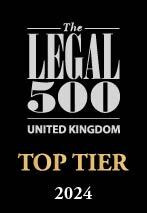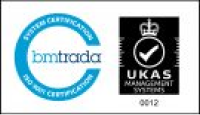<!-- wp:paragraph -->
<p><strong><u>Introduction</u></strong></p>
<!-- /wp:paragraph --><!-- wp:paragraph -->
<p>A disclosure pilot scheme (known as PD51U) operated in the Business and Property Courts (the “BPC”) in a number of courts including Leeds, Manchester, Newcastle, and London from 1<sup>st</sup> January 2019. Practice Direction 57A (“PD57A”) substantively reproduces PD51U and came into force on 1<sup>st</sup> October 2022.</p>
<!-- /wp:paragraph --><!-- wp:paragraph -->
<p>Eighteen months on, my experience of PD57A is that it is still slowly filtering through to practitioners and courts, notwithstanding that for practitioners in Leeds, Manchester, Newcastle, and London, these provisions (or some very similar) have been in force for over five years.</p>
<!-- /wp:paragraph --><!-- wp:paragraph -->
<p>This article hopes to de-mystify PD57A and provide some practical assistance to those still grappling with the provisions<a href="#_ftn1" id="_ftnref1">[1]</a>. You will however still need a copy of the most up to date PD57A to hand, and I apologise in advance for the number of acronyms used.</p>
<!-- /wp:paragraph --><!-- wp:paragraph -->
<p><strong><u>When does PD57A apply?</u></strong></p>
<!-- /wp:paragraph --><!-- wp:paragraph -->
<p>The first thing to ascertain is whether PD57A applies to your case, or whether you’re still looking at disclosure under CPR 31.</p>
<!-- /wp:paragraph --><!-- wp:paragraph -->
<p>The clue here is in the title of the article - PD57A applies to existing and new proceedings in the BPC (whether London or the provinces). It does not apply in the County Court and it does not apply to proceedings which are</p>
<!-- /wp:paragraph --><!-- wp:list -->
<ul class="wp-block-list"><!-- wp:list-item -->
<li>Proceeding under Part 8</li>
<!-- /wp:list-item --><!-- wp:list-item -->
<li>Within a fixed costs or capped costs regime</li>
<!-- /wp:list-item --></ul>
<!-- /wp:list --><!-- wp:paragraph -->
<p><strong><u>Which Regime?</u></strong></p>
<!-- /wp:paragraph --><!-- wp:paragraph -->
<p>Under Appendix 5 of PD57A you will find provisions for a simplified disclosure regime for Less Complex Claims (“LCC”). An LCC is a claim which by virtue of its nature, value, complexity, and the likely volume of Extended Disclosure (“ED”) may not benefit from the full procedure set out in the main body of Practice Direction 57AD.</p>
<!-- /wp:paragraph --><!-- wp:paragraph -->
<p>Deciding whether your claim is a LCC is akin to deciding to which track your case should be allocated. If the value of the claim (both financial and non-monetary) is less than £1M then the starting point is LCC, but the other factors (nature, complexity etc) can tip a claim under £1M into the full regime and cases over £1M into a LCC.</p>
<!-- /wp:paragraph --><!-- wp:paragraph -->
<p>The parties can agree to treat a claim as LCC or the court can order it.</p>
<!-- /wp:paragraph --><!-- wp:paragraph -->
<p>If your claim is LCC, you follow the provisions under Appendix 5, so this is something that needs to be agreed at the outset. If LCC is not agreed, the LCC regime does not apply unless and until the court makes an order to the contrary. The court may make such an order upon its own volition or by application by any party.</p>
<!-- /wp:paragraph --><!-- wp:paragraph -->
<p><strong><u>LCC Regime</u></strong></p>
<!-- /wp:paragraph --><!-- wp:paragraph -->
<p>My experience is that most practitioners agree to designate their cases as LCC and I have therefore considered this regime first so that when you read the main provisions you have in mind the parts which don’t apply or which are varied on the LCC. However, I’m afraid you still have to read the notes for the Full Regime below as I have not repeated the relevant parts of the Full Regime here.</p>
<!-- /wp:paragraph --><!-- wp:paragraph -->
<p>For LCC, Appendix 5 varies the provisions in the main body of PD57A – paragraph 1 of Appendix 5 provides that all the provisions of the main body apply unless they are expressly varied by Appendix 5.</p>
<!-- /wp:paragraph --><!-- wp:paragraph -->
<p>The simplified LCC procedure is found at paragraph 10 of Appendix 5.</p>
<!-- /wp:paragraph --><!-- wp:paragraph -->
<p>ED is confined to Models A, B, or D. Models C and E are not available for a LCC (Models considered under Full Regime below).</p>
<!-- /wp:paragraph --><!-- wp:paragraph -->
<p>The relevant Disclosure Review Document (“DRD”) for a LCC (which is referred to in the PD as the “LCCDRD”) is that set out at Appendix 6, and the timetable is that which appears at paragraphs 7 and 10 of the main body and Appendix 7.</p>
<!-- /wp:paragraph --><!-- wp:paragraph -->
<p>The LCCDRD only needs to be completed where one or more parties are seeking ED. If nobody wants ED or only Models A or B are proposed, there is no need to complete a DRD. If, however, in circumstances where Model B is proposed, the parties believe that it would be of assistance to identify and agree upon on List of Issues for Disclosure (or to complete any other sections of the LCCDRD), they may agree to do so.</p>
<!-- /wp:paragraph --><!-- wp:paragraph -->
<p>It is the Claimant’s responsibility to ensure that the LCCDRD is completed and a single agreed version filed with the court (although the parties can agree to pass this responsibility to another party).</p>
<!-- /wp:paragraph --><!-- wp:paragraph -->
<p>Completing the LCCDRD – don’t forget that the relevant DRD for a LCC is at Appendix 6.</p>
<!-- /wp:paragraph --><!-- wp:paragraph -->
<p>The only mandatory part of the LCCDRD is section 1 - “Issues for Disclosure and Disclosure Model Proposals”. The rest of the LCCDRD should only be completed if applicable and relevant.</p>
<!-- /wp:paragraph --><!-- wp:paragraph -->
<p>Paragraph 9 of Appendix 7 encourages the parties to confer about the LCCDRD in person rather than by letter/email, and my experience suggests that this is very good advice.</p>
<!-- /wp:paragraph --><!-- wp:paragraph -->
<p>The timetable for completing the LCCDRD is set out at paragraph 13 of Appendix 7, and I have set this out below. The parties may agree to revise the timetable provided it does not affect the date set for the CMC.</p>
<!-- /wp:paragraph --><!-- wp:paragraph -->
<p><strong>NOTE</strong> – the first deadline in the timetable is “<strong>within 28 days of the closure of statements of case”. </strong></p>
<!-- /wp:paragraph --><!-- wp:paragraph -->
<p><strong>HOWEVER </strong>- also remember that under paragraph 5 of the main regime, each party must provide to all other parties <strong>at the same time as its statement of case</strong> an Initial Disclosure List of Documents with copies of those documents.</p>
<!-- /wp:paragraph --><!-- wp:paragraph -->
<p>Disclosure is not something that can be considered ‘later’. It needs to be in the forefront of your mind from the start of your involvement with the case,</p>
<!-- /wp:paragraph --><!-- wp:paragraph -->
<p><span style="text-decoration: underline;">Timetable for completing the LCCDRD</span></p>
<!-- /wp:paragraph --><!-- wp:table -->
<figure class="wp-block-table"><table class="has-fixed-layout"><tbody><tr><td></td><td><strong>Stage to be completed</strong></td><td><strong>Deadline</strong></td></tr><tr><td><strong>Step 1</strong></td><td>Each party should state, in writing, whether or not it is likely to request Extended Disclosure Models A, B and/or D on one or more issues in the case. At this point it should not particularise the Model(s) or the issue(s) in the case.</td><td>Within 28 days of the closure of statements of case</td></tr><tr><td><strong>Step 2</strong></td><td>Where one or more of the parties has indicated it is likely to request search-based Extended Disclosure (i.e. Models D), unless the parties agree otherwise, the claimant must prepare and serve on the other parties a draft List of Issues for Disclosure unless the equivalent of such a list has already been agreed between the parties (for example, as part of a fuller list of issues). At the same time, the claimant shall identify for each Issue for Disclosure which Model of Extended Disclosure it proposes for each party. If the claimant fails to take these steps, the defendant may, but is not obliged to, prepare and serve its own draft List of Issues for Disclosure on the other parties.</td><td>Within 42 days of the closure of statements of case</td></tr><tr><td><strong>Step 3</strong></td><td>A party served with a draft List of Issues for Disclosure and proposals on Models shall indicate within section 1 of the LCCDRD whether it agrees with the proposed Issues for Disclosure and corresponding Model(s) for Extended Disclosure by completing the “Issue Agreed” and “Model Agreed” columns in section 1. If the party does not agree, or wishes to propose alternative or additional Issues for Disclosure or other Models, it should set out its alternative or additional proposals in section 1 of the LCCDRD and briefly explain and set out in section 6 of the LCCDRD the reasons why it disagrees with the Issues for Disclosure or Models proposals of the other party the reasons for the alternative proposals it is proposing.</td><td>As soon as practicable but in any event no later than 21 days after service of the draft List of Issues for Disclosure</td></tr><tr><td><strong>Step 4</strong></td><td>Having sought to agree the List of Issues for Disclosure and proposals on Model(s) for Extended Disclosure, the parties should prepare and exchange drafts of the LCCDRD (with all applicable sections of the document completed) in accordance with the guidance in Appendix 7.</td><td>As soon as reasonably practicable and in any event not later than 14 days before the case management conference</td></tr><tr><td><strong>Step 5</strong></td><td>The parties must seek to resolve any disputes over the scope of any Extended Disclosure sought or any other aspect of the completion of the LCCDRD.</td><td>In advance of the first case management conference</td></tr><tr><td><strong>Step 6</strong></td><td>Unless otherwise agreed by the parties or ordered by the court, the claimant(s) shall be responsible for ensuring that the form is completed and a single agreed version is filed with the court. Related correspondence and earlier drafts should not ordinarily be filed.</td><td>Not later than 5 days before the first case management conference</td></tr><tr><td><strong>Step 7</strong></td><td>The parties must independently file a signed Certificate of Compliance substantially in the form set out in Appendix 3 to the Practice Direction.</td><td>Not less than two days before the case management conference</td></tr></tbody></table></figure>
<!-- /wp:table --><!-- wp:paragraph -->
<p></p>
<!-- /wp:paragraph --><!-- wp:paragraph -->
<p>I cannot urge you strongly enough to engage with this process as early as possible and to meet the deadlines. If you get to CMC and you have not complied with PD57A you may find that the court simply adjourns your CMC (costing you and your clients both time and money). It also makes it very difficult (if not impossible) for the court to determine which Model to order if the issues for disclosure have not been identified. Both of these examples have arisen in cases I have been involved in within the last month.</p>
<!-- /wp:paragraph --><!-- wp:paragraph -->
<p>In relation to the completion of the LCCDRD, ‘issues for disclosure’ has the same meaning as in the main body of PD57A:</p>
<!-- /wp:paragraph --><!-- wp:quote -->
<blockquote class="wp-block-quote"><!-- wp:paragraph -->
<p>“Issues for Disclosure” means for the purposes of disclosure only those key issues in dispute, which the parties consider will need to be determined by the court with some reference to contemporaneous documents in order for there to be a fair resolution of the proceedings. It does not extend to every issue which is disputed in the statements of case by denial or nonadmission. (see paragraph 7.6 main body)</p>
<!-- /wp:paragraph --></blockquote>
<!-- /wp:quote --><!-- wp:paragraph -->
<p></p>
<!-- /wp:paragraph --><!-- wp:paragraph -->
<p>However, the issues for disclosure in a LCC must be brief, should rarely exceed 5, and should not be defined by reference to sub-issues if that will materially increase the length and complexity of the list.</p>
<!-- /wp:paragraph --><!-- wp:paragraph -->
<p>The list of issues for disclosure is not the same as the list of issues for trial, and the parties should have regard to the function of the list as set out at paragraph 10.5 of Appendix 5, which includes helping the parties to consider, and the court to determine, whether ED is required and, if so, the appropriate Model, and to identify the documents and categories of documents that are likely to exist and are required to be disclosed.</p>
<!-- /wp:paragraph --><!-- wp:paragraph -->
<p>If the parties cannot agree the terms of ED, the court will determine the issue at the CMC.</p>
<!-- /wp:paragraph --><!-- wp:paragraph -->
<p></p>
<!-- /wp:paragraph --><!-- wp:paragraph -->
<p><strong><u>Full Regime/Main Body of PD57A</u></strong></p>
<!-- /wp:paragraph --><!-- wp:paragraph -->
<p>Save where expressly modified by Appendix 5, these provisions also apply to a LCC.</p>
<!-- /wp:paragraph --><!-- wp:paragraph -->
<p>The regime starts with initial disclosure and paragraph 5 of the main body of PD57A provides that when a party serves its statement of case, it must also provide to all other parties an Initial Disclosure List of Documents that lists and is accompanied by the key documents that party has relied on and the key documents that are necessary to enable the other side to understand the case it has to meet.</p>
<!-- /wp:paragraph --><!-- wp:paragraph -->
<p>This form of disclosure is known as initial disclosure and is not required where the parties have agreed <span style="text-decoration: underline;">in writing</span> to defer or dispense with it. In the event of such agreement the parties should record their reasons so as to be available to the court if requested at the CMC. Any disagreements about whether initial disclosure should be dispensed with can be referred to the court.</p>
<!-- /wp:paragraph --><!-- wp:paragraph -->
<p>There is no requirement for a party to search for documents or to disclose adverse documents by way of initial disclosure. There is also no requirement for any document disclosed by way of initial disclosure to be translated.</p>
<!-- /wp:paragraph --><!-- wp:paragraph -->
<p>In <em>Breitenbach v Canaccord Genuity Financial Planning Ltd</em> [2020] EWHC 1355 (Ch) it was held that documents that were said to be necessary to evaluate and weigh the Defendant’s prospects of success were not key documents, as this went beyond enabling the claim to be understood.</p>
<!-- /wp:paragraph --><!-- wp:paragraph -->
<p>A party seeking disclosure in addition to or as an alternative to initial disclosure must request extended disclosure (“ED”). Where ED is sought, the parties are expected to complete the Disclosure Review Document (“DRD”) set out at Appendix 2.</p>
<!-- /wp:paragraph --><!-- wp:paragraph -->
<p>ED involves using Disclosure Models which are set out at paragraph 8 of PD57A:</p>
<!-- /wp:paragraph --><!-- wp:paragraph -->
<p><strong>Model A</strong>: Disclosure confined to known adverse documents<br>As set out in the title</p>
<!-- /wp:paragraph --><!-- wp:paragraph -->
<p><strong>Model B</strong>: Limited Disclosure<br>The key documents a party has relied on in its statement of case and the key documents that are necessary to enable the other side to understand the case it has to meet (ie, Initial Disclosure), plus known adverse documents.</p>
<!-- /wp:paragraph --><!-- wp:paragraph -->
<p><strong>Model C</strong>: Disclosure of particular documents or narrow classes of documents<br>The court may order a party to give disclosure of particular documents or narrow classes of documents relating to a particular Issue for Disclosure. </p>
<!-- /wp:paragraph --><!-- wp:paragraph -->
<p><strong>Model D</strong>: Narrow search-based disclosure, with or without Narrative Documents<br>Documents which are likely to support or adversely affect a party’s claim or defence or that of another party in relation to one or more of the issues for disclosure. Under D the parties are required to undertake a reasonable and proportionate search in relation to the Issues for Disclosure.</p>
<!-- /wp:paragraph --><!-- wp:paragraph -->
<p><strong>Model E</strong>: Wide search-based disclosure<br>Documents which are likely to support or adversely affect a party’s claim or defence or that of another party in relation to one or more of the issues for disclosure, or which may lead to a train of inquiry which may then result in the identification of other documents for disclosure. </p>
<!-- /wp:paragraph --><!-- wp:paragraph -->
<p>Although the parties can (and should where possible) agree the issues for disclosure and the Model, the court retains control and will determine whether to order ED at the CMC. If the parties cannot agree, the court will determine disputes at the CMC.</p>
<!-- /wp:paragraph --><!-- wp:paragraph -->
<p>A practical point – The parties may, at any time, ask the court to determine any disclosure issues, or provide guidance on any point concerning the operation of PD57A, by issuing an application notice. This is worth remembering if there are significant areas of disagreement, as the standard time allowed for a CMC may not be sufficient to deal with CMC issues and disclosure. I have recently had a CCMC adjourned to deal with budgets at a later date as the 90 minute hearing was largely taken up with disputes over disclosure. Dealing with disclosure at a separate hearing before the CCMC would have been more appropriate.</p>
<!-- /wp:paragraph --><!-- wp:paragraph -->
<p>The Court will only order search based models – C, D, E – if persuaded it is appropriate, and Model E will only be ordered in an exceptional case. Paragraph 6.4 sets out the factors to be considered when determining whether ED should be ordered:</p>
<!-- /wp:paragraph --><!-- wp:list {"ordered":true} -->
<ol class="wp-block-list"><!-- wp:list-item -->
<li>the nature and complexity of the issues in the proceedings;</li>
<!-- /wp:list-item --><!-- wp:list-item -->
<li>the importance of the case, including any non-monetary relief sought;</li>
<!-- /wp:list-item --><!-- wp:list-item -->
<li>the likelihood of documents existing that will have probative value in supporting or undermining a party’s claim or defence;</li>
<!-- /wp:list-item --><!-- wp:list-item -->
<li>the number of documents involved;</li>
<!-- /wp:list-item --><!-- wp:list-item -->
<li>the ease and expense of searching for and retrieval of any particular document (taking into account any limitations on the information available and on the likely accuracy of any costs estimates);</li>
<!-- /wp:list-item --><!-- wp:list-item -->
<li>the financial position of each party; and</li>
<!-- /wp:list-item --><!-- wp:list-item -->
<li>the need to ensure the case is dealt with expeditiously, fairly and at a proportionate cost.</li>
<!-- /wp:list-item --></ol>
<!-- /wp:list --><!-- wp:paragraph -->
<p>There is no presumption that a party is entitled to search based ED, and it is for the party requesting ED to show that what is sought is appropriate, reasonable, and proportionate.</p>
<!-- /wp:paragraph --><!-- wp:paragraph -->
<p>When it is necessary to decide any question of what is reasonable and proportionate under a particular Model, the court will consider all the circumstances of the case including 6.4 and the overriding objective.</p>
<!-- /wp:paragraph --><!-- wp:paragraph -->
<p>At paragraph 2AA-63.1 the White Book 2024 states:</p>
<!-- /wp:paragraph --><!-- wp:paragraph -->
<p><strong>Approach to determining choice of disclosure model</strong></p>
<!-- /wp:paragraph --><!-- wp:quote -->
<blockquote class="wp-block-quote"><!-- wp:paragraph -->
<p>In <em>McParland & Partners Ltd v Whitehead</em> [2020] EWHC 298 (Ch), Vos C at [50]–[52] provided guidance on the approach to be taken determining the appropriate disclosure model under the disclosure pilot scheme. The same approach will apply to PD 57AD. Where a party had made a reasonable request for further documentation and disclosure could not be agreed, Model C disclosure was appropriate. Where parties did not trust each other, Model D disclosure was likely to be the simplest, most appropriate choice. Care should also be taken to consider if different disclosure models should apply to different parties. There is no reason in principle why the same issue might not be subject to disclosure Model D for one party, while it is subject to disclosure Models B or C for another party. Model D disclosure may also be appropriate in respect of issues that are central to a party’s pleaded case: <em>Lombard North Central Plc v Airbus Helicopters SAS</em> [2020] EWHC 3819 (Comm), Bryan J, at [20]–[30] following McParland at [51].</p>
<!-- /wp:paragraph --></blockquote>
<!-- /wp:quote --><!-- wp:paragraph -->
<p></p>
<!-- /wp:paragraph --><!-- wp:paragraph -->
<p>The DRD for cases proceeding under the full regime is found at Appendix 2, and the timetable pertaining to the same is at paragraph 7 of the main body of PD57A. </p>
<!-- /wp:paragraph --><!-- wp:paragraph -->
<p>Again, there is a handy timetable provided (which can be found at the end of Appendix 2). </p>
<!-- /wp:paragraph --><!-- wp:paragraph -->
<p><span style="text-decoration: underline;">Timetable for completing the DRD</span></p>
<!-- /wp:paragraph --><!-- wp:paragraph -->
<p>The timetable should be read in conjunction with paragraph 7 as paragraph 7 sets out exactly what each party needs to do.</p>
<!-- /wp:paragraph --><!-- wp:table -->
<figure class="wp-block-table"><table class="has-fixed-layout"><tbody><tr><td></td><td><strong>Stage to be completed</strong></td><td><strong>PD Ref.</strong></td><td><strong>Deadline</strong></td></tr><tr><td><strong>Step 1</strong></td><td>Each party should state, in writing, whether or not it is likely to request search-based Extended Disclosure to include one or more of Models C, D or E on one or more issues in the case. At this point it should not particularise the Model(s) or the issue(s) in the case.</td><td>Para 7.1</td><td>Within 28 days of the closure of statements of case</td></tr><tr><td><strong>Step 2</strong></td><td>Where one or more of the parties has indicated it is likely to request search-based Extended Disclosure (i.e. Models C, D and/or E), the claimant must prepare and serve on the other parties a draft List of Issues for Disclosure unless the equivalent of such a list has already been agreed between the parties (for example, as part of a fuller list of issues). At the same time, the claimant shall identify for each Issue for Disclosure which Model of Extended Disclosure it proposes for each party. If the claimant proposes Model C Disclosure for any Issue for Disclosure it should indicate, using Section 1B of the Disclosure Review Document, the particular documents or narrow class of documents it proposes should be defined for that purpose. If the claimant fails to take these steps, the defendant may, but is not obliged to, prepare and serve its own draft List of Issues for Disclosure on the other parties together with its proposals on Models and any Model C requests.</td><td>Para 7.2</td><td>Within 42 days of the closure of statements of case</td></tr><tr><td><strong>Step 3</strong></td><td>A party served with a draft List of Issues for Disclosure and proposals on Models shall indicate using Section 1A (and, if applicable, 1B) of the Disclosure Review Document whether it agrees with the proposed Issues for Disclosure and corresponding Model(s) for Extended Disclosure (including any proposals as to how Model C Disclosure should be defined). If the party does not agree, or wishes to propose alternative or additional Issues for Disclosure, other Models and/or other Model C proposals, it should set out its alternative or additional proposals in Sections 1A and 1B of the Disclosure Review Document.</td><td>Para 7.9</td><td>As soon as practicable but in any event no later than 21 days after service of the draft List of Issues for Disclosure</td></tr><tr><td><strong>Step 4</strong></td><td>The parties must discuss and seek to agree the draft List of Issues for Disclosure, the Models identified for each Issue for Disclosure, and the wording of any Model C proposals. They should consider whether any draft Issue for Disclosure can be removed.</td><td>Paras 7.10 and 10.6</td><td>In advance of the first case management conference</td></tr><tr><td><strong>Step 5</strong></td><td>Having sought to agree the List of Issues for Disclosure, proposals on Model(s) for Extended Disclosure and the wording of any Model C requests, the parties should prepare and exchange drafts of Section 2 of the Disclosure Review Document (including costs estimates of different proposals, and where possible estimates of the likely amount of documents involved). Section 2 of the Disclosure Review Document should be completed only if the parties are seeking an order for Extended Disclosure involving a search-based Disclosure Model (i.e. Models C, D and/or E).</td><td>Para 10.5</td><td>As soon as reasonably practicable and in any event not later than 14 days before the case management conference.</td></tr><tr><td><strong>Step 6</strong></td><td>A finalised single joint Disclosure Review Document should be filed by the claimant. Related correspondence and earlier drafts should not ordinarily be filed..</td><td>Para 10.7</td><td>Not later than 5 days before the case management conference</td></tr><tr><td><strong>Step 7</strong></td><td>The parties must independently file a signed Certificate of Compliance substantially in the form set out in Appendix 3 to the Practice Direction</td><td>Para 10.8</td><td>Not less than two days before the case management conference</td></tr></tbody></table></figure>
<!-- /wp:table --><!-- wp:paragraph -->
<p></p>
<!-- /wp:paragraph --><!-- wp:paragraph -->
<p>Guidance on completing the DRD is found at paragraph 10 and in the explanatory notes which come after the DRD in Appendix 2.</p>
<!-- /wp:paragraph --><!-- wp:paragraph -->
<p><span style="text-decoration: underline;">Adverse Documents</span></p>
<!-- /wp:paragraph --><!-- wp:paragraph -->
<p>“Adverse Documents” and “known adverse documents” are defined at paragraphs 2.7 and 2,8:</p>
<!-- /wp:paragraph --><!-- wp:paragraph -->
<p>2.7 Disclosure extends to “adverse” documents. A document is “adverse” if it or any information it contains contradicts or materially damages the disclosing party’s contention or version of events on an issue in dispute, or supports the contention or version of events of an opposing party on an issue in dispute, whether or not that issue is one of the agreed Issues for Disclosure.</p>
<!-- /wp:paragraph --><!-- wp:paragraph -->
<p>2.8 “Known adverse documents” are documents (other than privileged documents) that a party is actually aware (without undertaking any further search for documents than it has already undertaken or caused to be undertaken) both (a) are or were previously within its control and (b) are adverse.</p>
<!-- /wp:paragraph --><!-- wp:paragraph -->
<p>Note as well that a company or organisation is “aware” if any person within the company/organisation with accountability or responsibility for the events or circumstances which are the subject of the case or for the conduct of the proceedings is aware, and at paragraph 2.9 it is expressly said that it is necessary to take reasonable steps to check the position with relevant persons who have left the company/organisation.</p>
<!-- /wp:paragraph --><!-- wp:paragraph -->
<p>If an order for ED is made, the disclosure made must also include any known adverse documents not already disclosed. If ED is not ordered, all known adverse documents must be disclosed within 60 days of the first CMC, and a Disclosure Certificate provided. </p>
<!-- /wp:paragraph --><!-- wp:paragraph -->
<p><span style="text-decoration: underline;">Complying with ED</span></p>
<!-- /wp:paragraph --><!-- wp:paragraph -->
<p>Paragraph 12 sets out how to comply with an order for ED:</p>
<!-- /wp:paragraph --><!-- wp:list -->
<ul class="wp-block-list"><!-- wp:list-item -->
<li>service of a signed Disclosure Certificate (Appendix 4) confirming all known adverse documents have been disclosed</li>
<!-- /wp:list-item --><!-- wp:list-item -->
<li>service of an ED Disclosure List of Documents</li>
<!-- /wp:list-item --><!-- wp:list-item -->
<li>production of the documents</li>
<!-- /wp:list-item --></ul>
<!-- /wp:list --><!-- wp:paragraph -->
<p>Note paragraph 12.5 -</p>
<!-- /wp:paragraph --><!-- wp:paragraph -->
<p>12.5 A party may not without the permission of the court or agreement of the parties rely on any document in its control that it has not disclosed at the time required for Extended Disclosure (or within 60 days after the first case management conference in a case where there will be no Extended Disclosure). For the avoidance of doubt the party and its legal representatives remain under the duties under paragraph 3.1 (the Disclosure Duties) and 3.2 above.</p>
<!-- /wp:paragraph --><!-- wp:paragraph -->
<p>Where there has been a failure to comply with ED the court may make orders which may include ordering the service of a further, or revised Disclosure Certificate, to make further searches, provide a further or improved Extended Disclosure List of Documents, produce documents, or make a witness statement explaining any matter relating to disclosure.</p>
<!-- /wp:paragraph --><!-- wp:paragraph -->
<p>A party applying for such an order should normally file a witness statement in support and must satisfy the court that making the order is reasonable and proportionate (paragraph 17).</p>
<!-- /wp:paragraph --><!-- wp:paragraph -->
<p>A court may, at any stage, make an order varying an order for ED. Any party applying for such an order must file a witness statement, and must satisfy the court that varying the original order is both necessary for the just disposal of the proceedings, and that it is reasonable and proportionate (paragraph 18).</p>
<!-- /wp:paragraph --><!-- wp:paragraph -->
<p>Paragraph 14 deals with the right to withhold documents, paragraph 15 deals with confidentiality, and paragraph 16 deals with redaction.</p>
<!-- /wp:paragraph --><!-- wp:paragraph -->
<p>Pursuant to paragraph 21, a party may at any time request a copy of a document mentioned in</p>
<!-- /wp:paragraph --><!-- wp:list -->
<ul class="wp-block-list"><!-- wp:list-item -->
<li>a statement of case</li>
<!-- /wp:list-item --><!-- wp:list-item -->
<li>a witness statement, summary, or affidavit</li>
<!-- /wp:list-item --><!-- wp:list-item -->
<li>an expert’s report</li>
<!-- /wp:list-item --></ul>
<!-- /wp:list --><!-- wp:paragraph -->
<p><span style="text-decoration: underline;">Costs</span></p>
<!-- /wp:paragraph --><!-- wp:paragraph -->
<p>Parties are required to provide an estimate of what they consider to be the likely costs of giving the disclosure proposed by them in the Disclosure Review Document, and the likely volume of documents involved, in order that a court may consider whether such proposals on disclosure are reasonable and proportionate.</p>
<!-- /wp:paragraph --><!-- wp:paragraph -->
<p>In cases where the cost budgeting scheme applies, if it is not practical to complete the disclosure section of Form H in relation to disclosure prior to the court making an order in relation to disclosure at the CMC, the parties may notify the court that they have agreed to postpone completion of that section of Form H. The court will give a date at the CMC for completion of the disclosure section, and where possible the court will then consider (and if appropriate, approve) that part of the cost budget without an oral hearing.</p>
<!-- /wp:paragraph --><!-- wp:paragraph {"align":"right"} -->
<p class="has-text-align-right">Nicola Phillipson<br>Parklane Plowden Chambers<br>May 2024</p>
<!-- /wp:paragraph --><!-- wp:paragraph -->
<p><em>This article has been written by a trusts and probate practitioner for the benefit of practitioners who attended Parklane Plowden’s Annual Trusts Conference in June 2024. Therefore, whilst this article may be of use to other practitioners, please be aware of the intended audience.</em></p>
<!-- /wp:paragraph --><!-- wp:paragraph -->
<p><em>This article is also intended to provide guidance only and should not be relied upon as legal advice.</em></p>
<!-- /wp:paragraph --><!-- wp:separator -->
<hr class="wp-block-separator has-alpha-channel-opacity"/>
<!-- /wp:separator --><!-- wp:paragraph -->
<p><a id="_ftn1" href="#_ftnref1">[1]</a> Please see disclaimer above – this article has been written with trusts practitioners in mind</p>
<!-- /wp:paragraph --><!-- wp:paragraph -->
<p></p>
<!-- /wp:paragraph --><!-- wp:paragraph -->
<p></p>
<!-- /wp:paragraph --><!-- wp:paragraph -->
<p></p>
<!-- /wp:paragraph -->







